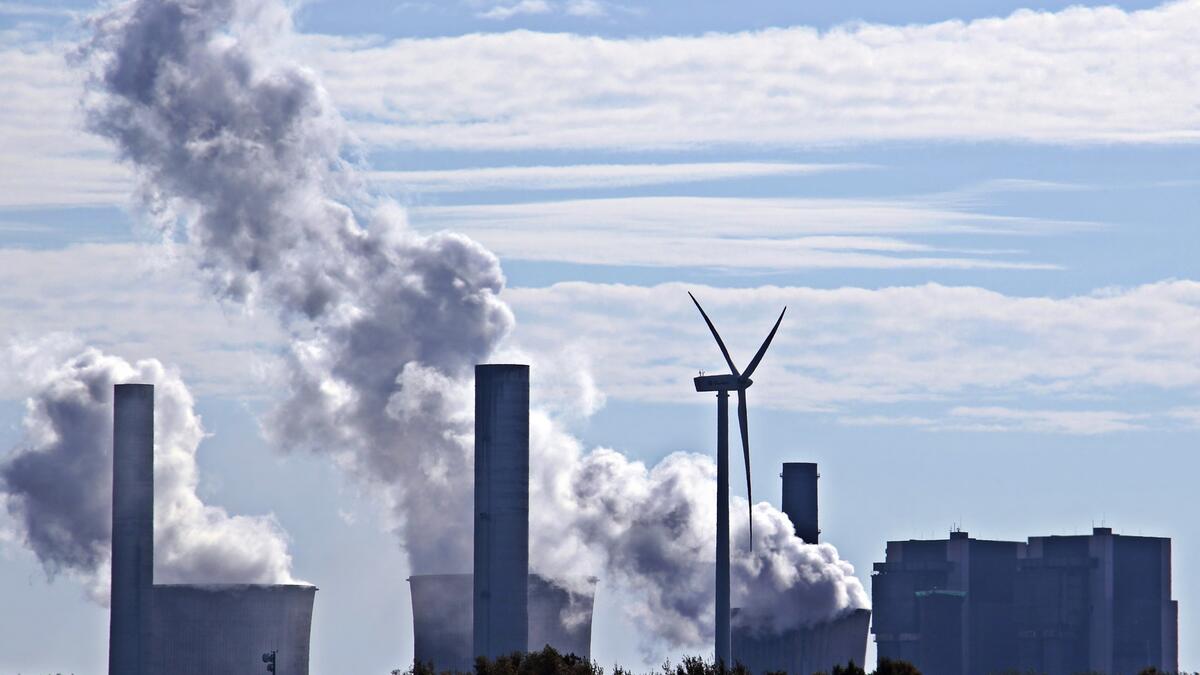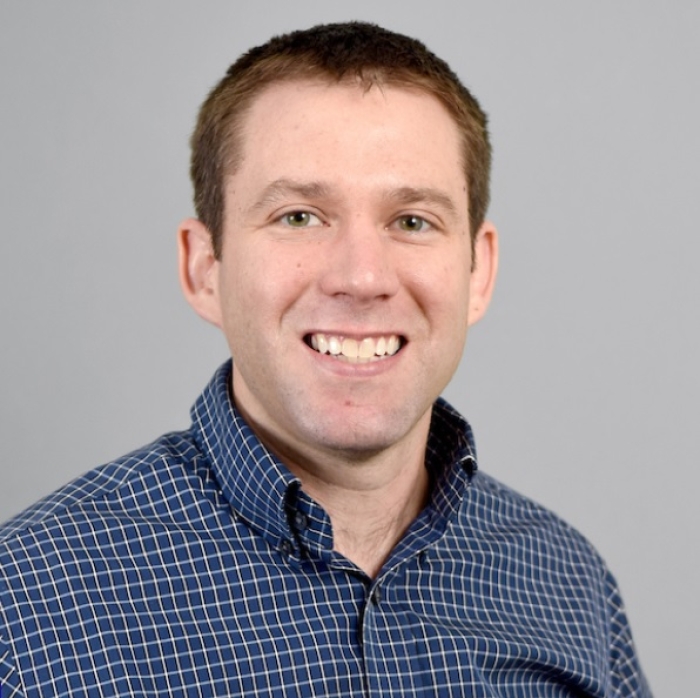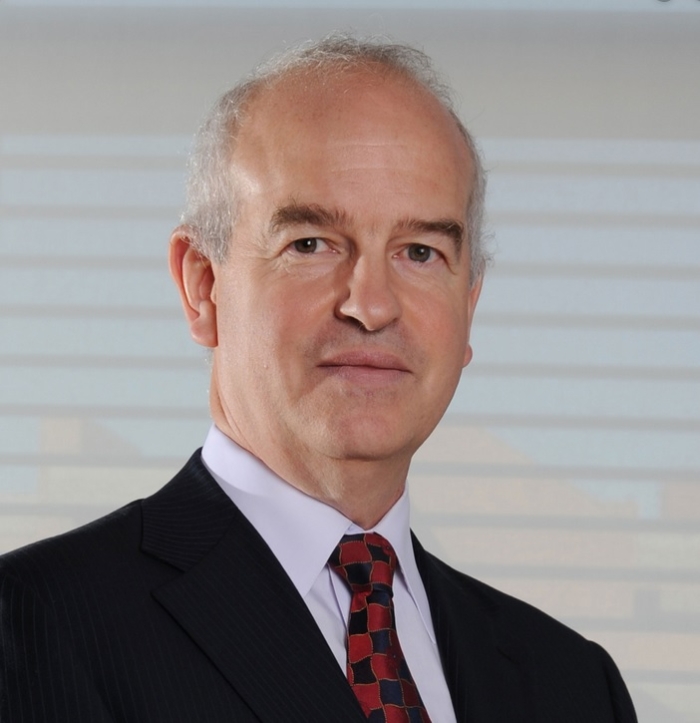This summer, the Navajo Generating Station, a coal-fired power plant that has been providing jobs and economic support for residents in and around Page, Arizona, for nearly half a century, lost its fight with natural gas.
Its closing is indicative of a nationwide trend toward adopting renewable energy sources. But while environmentalists delight in the progress toward a more sustainable future, the workers and communities who relied on the plant to support them financially are at a loss.
“We have to get off coal,” said Christopher Jones, an associate professor at Arizona State University’s School of Historical, Philosophical and Religious Studies. “And yet getting off coal can have devastating consequences for populations around us. And if we do not address that, we have failed to make a good energy transition.”
Christopher Jones
Jones, who has written a book on the subject, will co-teach a course next year called “Energy and Social Justice” with Gary Dirks, senior director of the Global Futures Laboratory and director of LightWorks. The course is one of five new labs offered by the Humanities Lab for the spring 2020 semester.
The other labs are “Educating for Inclusion,” “Working Bodies and Technology,” “Life Without Earth,” and “Sound and Well-Being.”
The Humanities Lab was created in 2017 to allow students to explore grand social challenges from multiple perspectives with an emphasis on community engagement.
Students participating in the “Energy and Social Justice” lab can expect to meet with prominent energy leaders and community members involved in the closing of the Navajo Generating Station, including a member of the Navajo Nation, a representative of the Salt River Project and an official from the city of Page.
Gary Dirks
“I’ve felt for some time that the energy system has to change.” Dirks said. “And in thinking about what that change could look like, it was important in my mind that we get ideas of justice and equity high on the list of the criteria for guiding how this transition could take place.”
He and Jones sat down with ASU Now to discuss that and more.
Editor’s note: Responses have been edited for length and clarity.
Question: How are energy production and social justice related?
Chris Jones: On every level and in every way.
Gary Dirks: I would say there’s three key factors when it comes to energy transition. The first has to do with access to energy because it’s simply the case that modern life requires a lot of energy, even in relatively undeveloped places. The second is affordability. Third, I would point to the economist Joseph Schumpeter, who talked about how in democracies, the drive toward innovation causes a constant churn of destruction and creation.
CJ: Move fast and break things. The Silicon Valley credo.
GD: That’s right. We almost pretend that the destruction side doesn’t exist. Well, the reality is that real people who have real lives are now turned on their heads and in some instances it can be really catastrophic.
CJ: At one level the energy justice question is an economic question. But it's also about communities. What happens to a community when their jobs go away? Should we prop them up? Do we just perpetuate something that’s bad for the environment? And if not, what’s a just transition for communities like that?
GD: There's also the reality that these coal plants are very polluting. And they were put in places where you could get away with that, and those populations lived with that pollution. They've gotten cleaner as time has gone on, but nonetheless, they are big sources of heavy metal pollution and all sorts of ash and particulates. And then there’s great demands on water and everything associated with water pollution. So there's that side to it, too.
Q: Why do modern energy production methods like solar power make the transition away from coal especially difficult?
GD: if you look at the full text of what Schumpeter had to say in this particular part of the treatise that he was writing, he says that creative destruction is OK because those people who suffer the consequences on the destruction side will move to the created side and they will find a future there. Well, in actual practice, that isn’t true. Today it’s almost silly to say that because the created side, at least with energy production, doesn't have any jobs. One of the reasons solar energy is so cheap is because they just sit there. Once you’ve built them, you put them out in the sun and they just sit there and make energy. And it's pretty much true for windmills, too. So all of these jobs are gone and now you've got people who are not that easy to re-skill, in poorly thought out “let’s teach them to write apps” situations.
Q: What’s a good solution for that? How do we make the transition to renewable energy more equitable for coal-dependent communities?
CJ: The stories we tell about energy transitions have an enormous power to shape what choices get made. Who gets to participate, what's paid attention to. What Gary suggested, and I'm really supportive of, is playing with the idea of relationship-building narratives. It's easy to craft a narrative that SRP is evil. But how do you craft narratives that bring people together to see things in a new way and move forward?
GD: We have to dispense with the narrative that says, "Oh, it'll be OK. They will find their way." Because the truth of the matter is that they don't. And that narrative profoundly overlooks the fact that these people don't want to leave because that's where their lives are. Many of them chose to work in mines or in power plants or steel factories, not because they thought that was an especially attractive career. These were the jobs that were available at their homes that enabled them to stay with their families. So the idea that they're going to pick up and go off to California and become software engineers is magical thinking. It just doesn't happen.
We need a solution that is much more sophisticated and much more thoughtful, beginning with a narrative that says it isn't going to be OK if you just do nothing. Hard questions don't have simple answers. So I talk about solutions in this way: a solution as a collection of objects, processes, relationships and narratives that enable stakeholders to better articulate and govern opportunities and threats. So there's the four parts to it: the idea of objects, which is most often technologies; processes, which is the way we organize ourselves and do things; relationships, which are important in terms of bonds between people and in groups of people; and then narrative, recognizing that all decisions are made within a context.
There are a group of people who want to build a 30-meter telescope on top of Mauna Kea in Hawaii. So there it is. That is a simple fact. It's not complicated. They want to build a 30-meter telescope and put it on top of Mauna Kea. There are many Hawaiians who see it as an incredible opportunity and there are an almost equal number of Hawaiians who see it as a terrible threat. Exactly the same circumstances, exactly the same factual information. One group sees it one way and the other group sees the other way.
Often with difficult problems something can be both an opportunity and a threat depending on who you are. But starting with that notion, then, in my mind, narrative becomes the key framing within which these groups of people that have to decide how to manage are going to begin to orient themselves in thinking about how to articulate what the issue is and then what kind of governance mechanisms would be most useful. Narrative can build those relationships between people, especially those who are inclined to see themselves in an antagonistic relationship; I think it becomes central to finding those kinds of connections that can then lead to appropriate concessions, that can lead to maybe technologies that would be helpful, maybe processes that could be helpful, but ultimately a governance scheme that they can live with.
Q: Whose responsibility is it to craft those narratives? SRP’s?
CJ: That’s actually a key question for the course. We'll have some opinions on it, but it's an open question and it's actually part of what we want students to think about in more than a knee-jerk way.
GD: I was at a workshop recently with very senior people from SRP and they were the ones most responsible for the decision. I say most responsible because it's a joint venture and there are other owners of that plant besides just them. They're not evil people. This is the way capitalism in the United States works. It's cheaper to burn natural gas. Their obligations in law are very, very limited when they decide to terminate the use of their asset. So you've got that sitting in the background, in this whole question of social justice. That is, who is responsible for administering justice, who's responsible for paying for justice? There is a legal answer to that question and then there is a moral answer to that question. Legally the answer is no. (The power station is) their asset. They can do whatever they want with it. And that's the way the United States society works. If they want to shut an asset, they have that right. There are certain things they have to do environmentally; they probably will have to scrape all the steel off the site, they'll have to demolish everything and put it back more or less the way that it was. There will be termination clauses with the employees (most of the time those don’t give more than about three months’ notice that you don't have a job). But that's it, legally. Now, morally, I would make the argument that you have more of an obligation that that. But so does this university. So does the state of Arizona. So do the big NGOs. So does the federal government. We all are part of this bigger society and we all play certain roles and we all need to be prepared to say it's our collective responsibility. Whether that's a narrative that comes out of the students’ work in the course or not remains to be seen, but it's certainly, I think, a narrative that needs to be developed.
CJ: And I think we'll get different opinions from different students, and it'll be fun to see what they come up with and, wherever they are, push them past their gut reaction and say, let's get deeper than that. What if you run into a smart, well-meaning person who has some different views than you who doesn't see it that way? What can you do? We certainly live in an age where we don't convince everyone else of our views all the time. So how do you adapt your narrative so that it could actually be meaningfully discussed by people with different views from yours? And we're interested in how that happens in genre. So we're going to have students doing things like recording podcasts, writing op-eds and making documentary videos to figure out what type of genre fits the type of narrative they want to tell. And they’ll have a good deal of opportunity to figure that out on their own, so their final projects will take quite different forms.
Top photo courtesy of Pixabay
More Environment and sustainability

ASU prof turns trash into treasure
The Research Corporation for Science Advancement, or RCSA, regularly hosts a series of discussions known as Scialog, a portmanteau of science and dialogue. Created in 2010, the Scialog format…

Best outdoor experiences are shared and build connections, recreation professor says
Steve Sassaman doesn’t really need to tell you he’s an outdoorsman. One look at his full, dark beard gives a vibe that clearly says he knows which end of the kayak to put into the water first.While…

ASU offers new project-based courses for global leaders of tomorrow
Addressing complex challenges requires innovative solutions.This is why the College of Global Futures — with its four academic units including the School for the Future of Innovation in Society, the…


